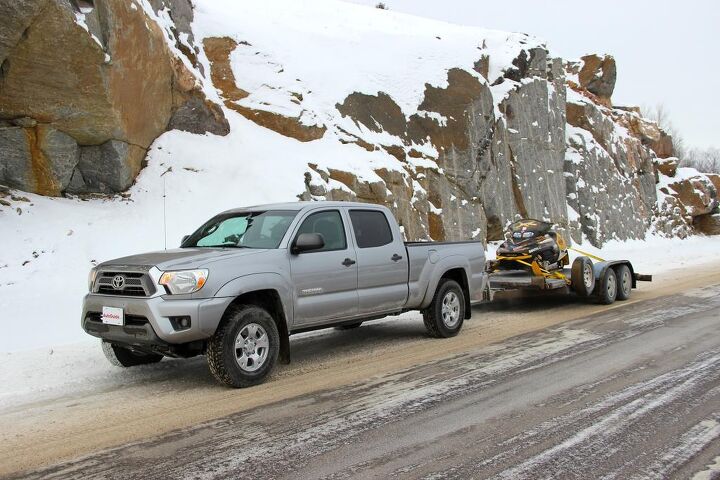Detroit 2015: Toyota Debuting Next-Gen Tacoma In January
The next-generation Toyota Tacoma will roll down the ramp this January at the 2015 Detroit Auto Show.
Autoblog reports the announcement came from Toyota senior vice president of operations, Bob Carter, who didn’t offer much else. The new truck is expected to be a significant upgrade than the current model, last refreshed in 2012, and will be coming into a market that now includes the Chevrolet Colorado/GMC Canyon twins, both of whom have done well for themselves since debuting in showrooms this autumn.
Carter also announced that Lexus would unveil two performance vehicles, but again, proclaimed nothing more than the promise that all in attendance would enjoy seeing them.
Seattle-based writer, blogger, and photographer for many a publication. Born in Louisville. Raised in Kansas. Where I lay my head is home.
More by Cameron Aubernon


































Comments
Join the conversation
Toyota cannot continue to use the "upgrade" playbook they've been using. The current engine offerings are completely uncompetitive in the power, refinement, and fuel economy space, and the 5-speed auto they're using (4-speed in the now-defunct base model regular cab Tacoma) is also woefully outdated. If the Yaris, Corolla, RAV-4, and Camry refreshes are any indication - and when one looks at news stories of what Toyota has been developing, the picture isn't exactly rosy. Oh it will sell regardless of whether the gas gulping 4.0 V6 and 5-speed auto soldier on or not. Eventually, this lack of investment in newer technology will catch up with them. There is no reason to think Toyota is immune to the patterns and fortunes of other makers.
I'm not a trucky guy by any means, but if I could get a Taco with a miserly 4-banger and a manual, and have it ride at a normal height instead of this faux-by-four trend that has taken over the pickup world, I might be tempted.
I wonder if the divergence of the Hilux/Tacoma will be removed. The Tacoma chassis was a Surf chassis, a lighter chassis than the Hilux. I'd bet that the next Tacoma will be heavily based on the Hilux. Logic displays this, both vehicles appear to be release at roughly the same time. What does interest me is the engine selection for the next generation Hilux/Tacoma. BMW has been in a transfer of technology deal with Toyota. BMW received Toyota's EV and hybrid tech in exchange for BMW diesel tech. Toyota is famous for charging a premium for nothing substantial, the Toyota Tax. I wonder if the next Hilux/Tacoma will be the same? I do envisage an relatively renewed interest in the US midsize pickup market. You guys are finally receiving the much more refined and capable global midsizers we've had now since late 2010. It's better late than never. http://www.motoring.com.au/news/2014/commercial/toyota/hilux/spy-pics-2015-toyota-hilux-46251
I think we've sort of Moved up a size with regards to trucks in the US. 1500 is the new midsize, 2500 is the new 1500 and so on.